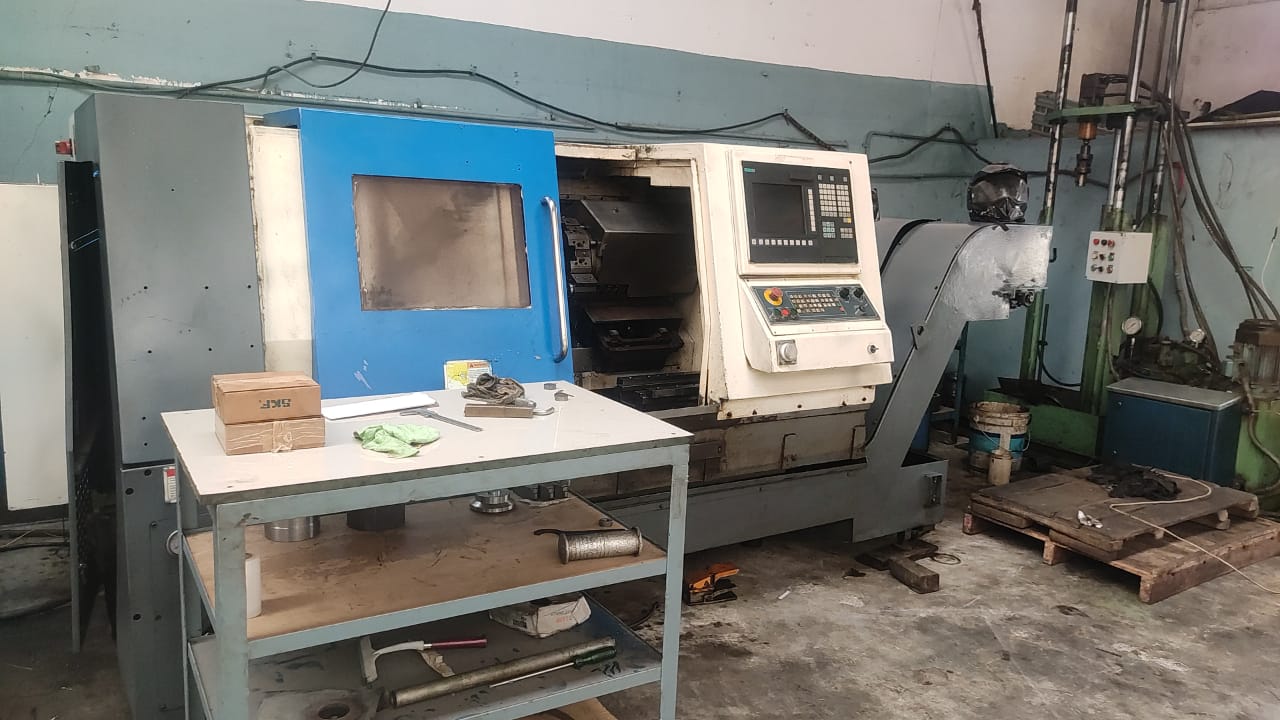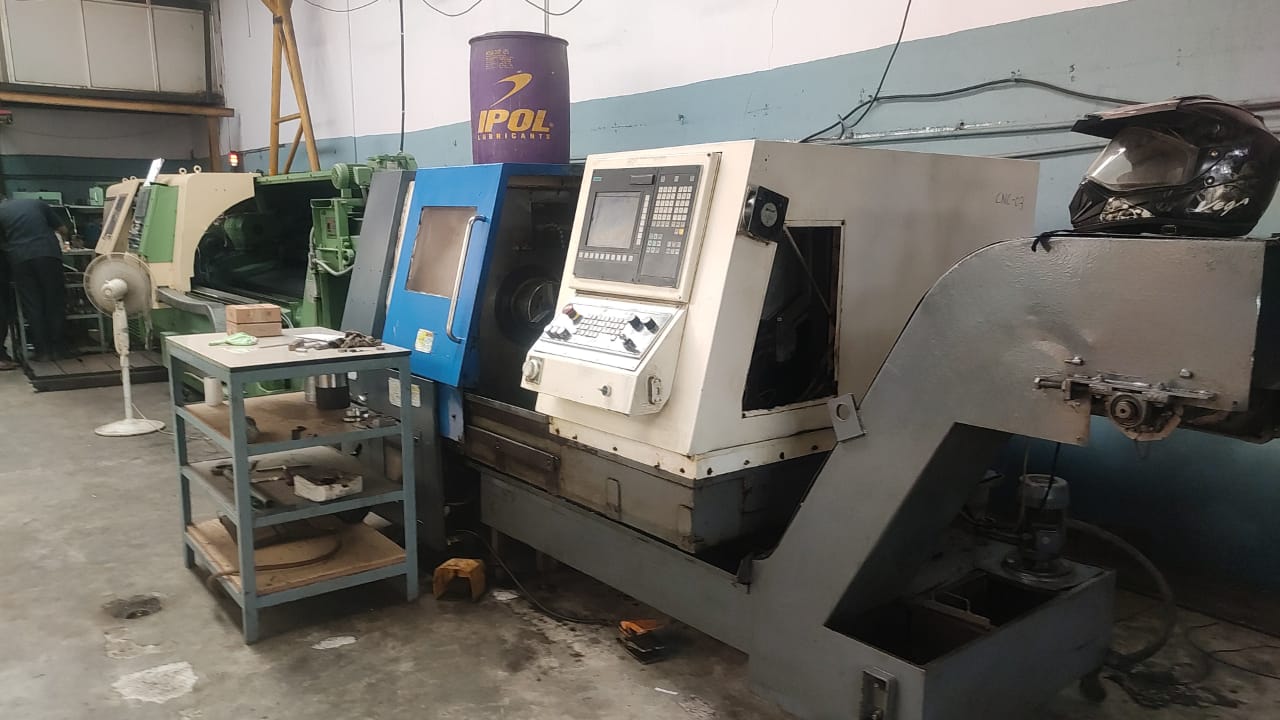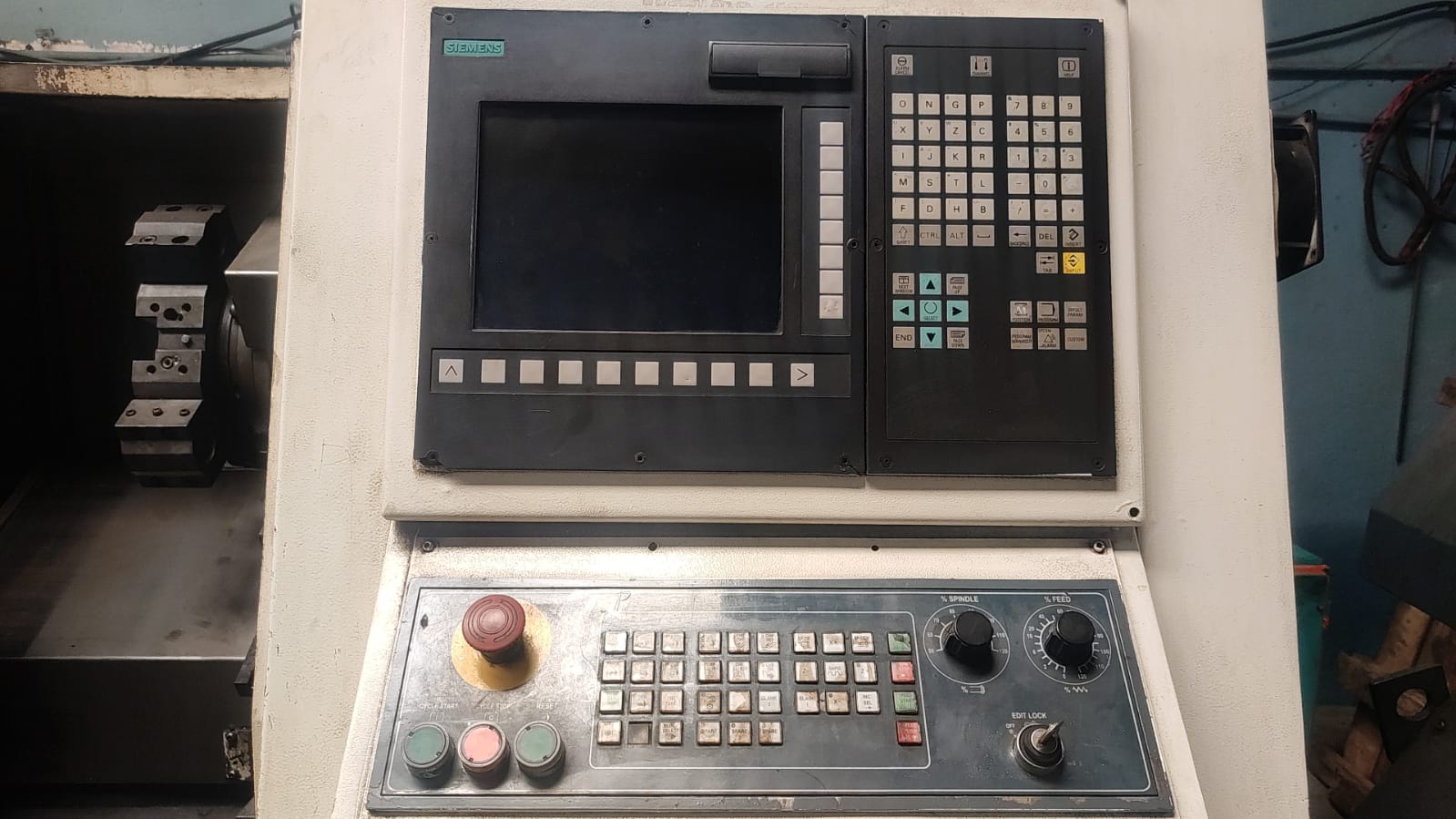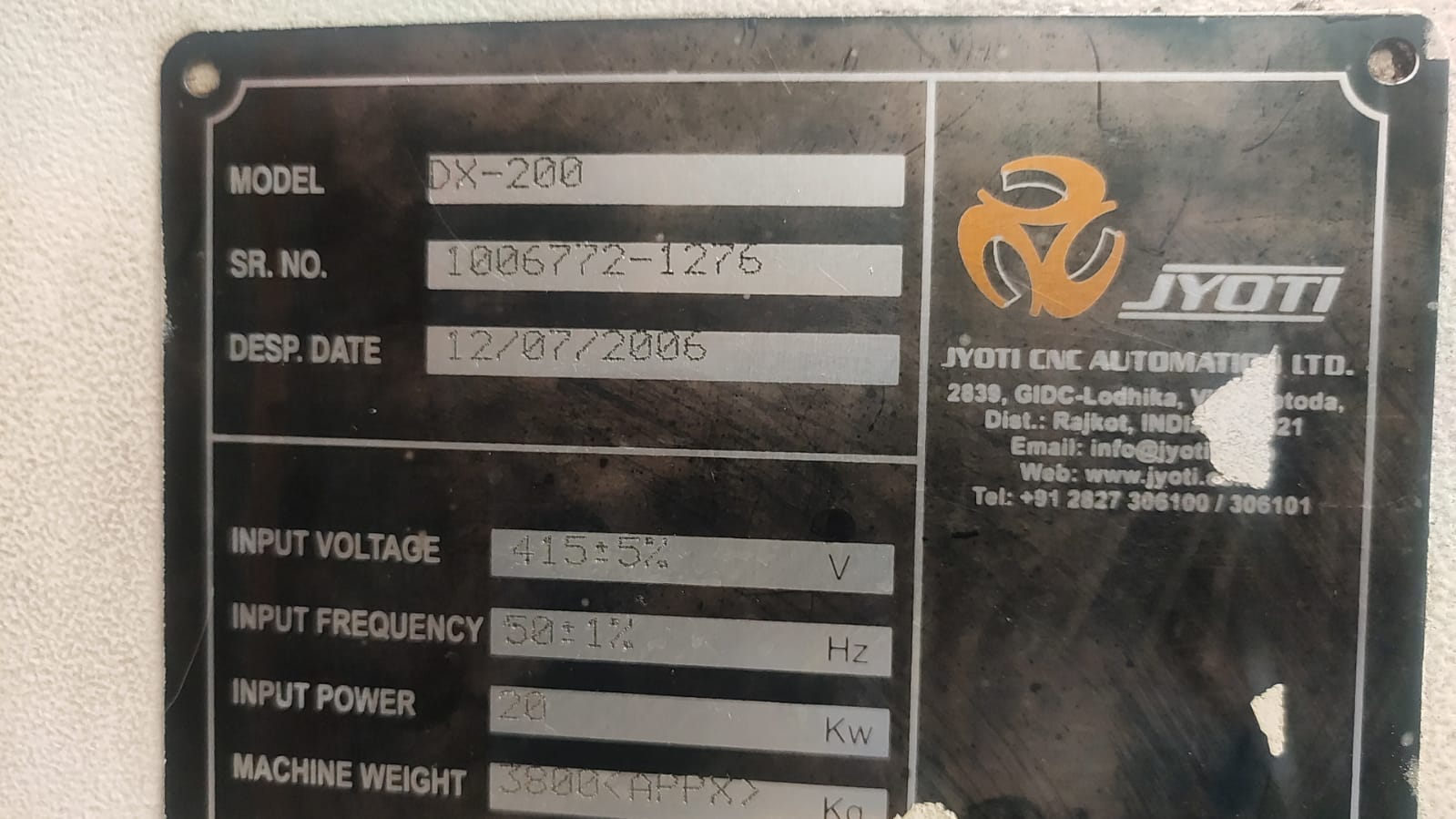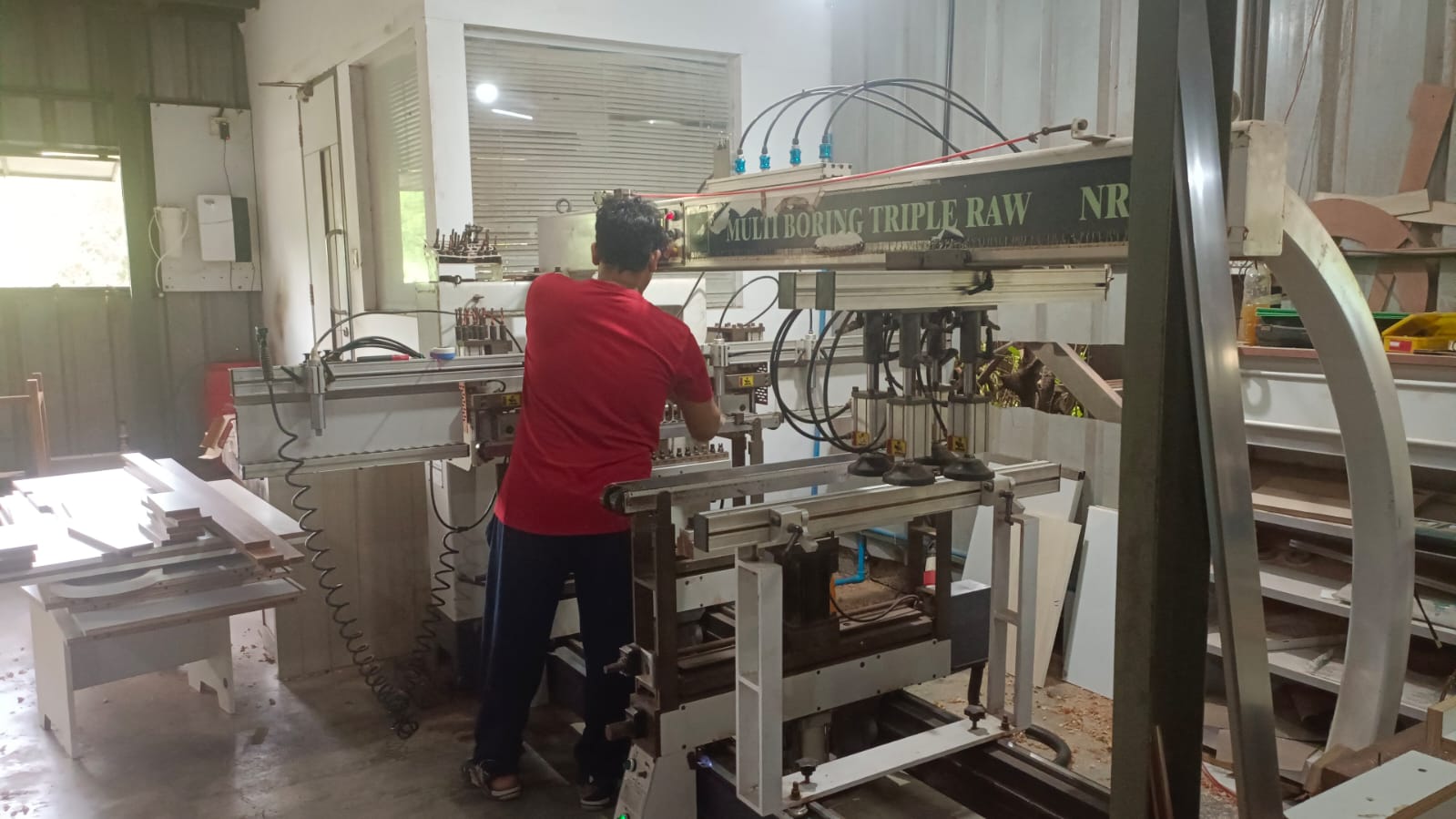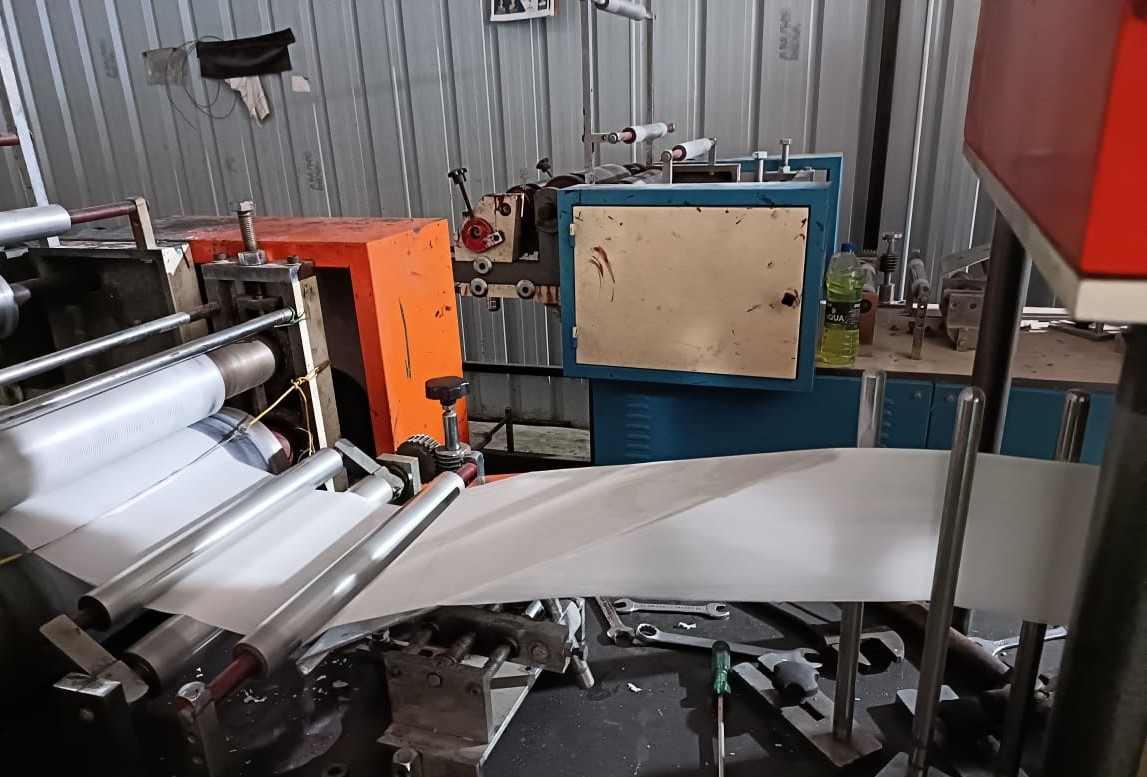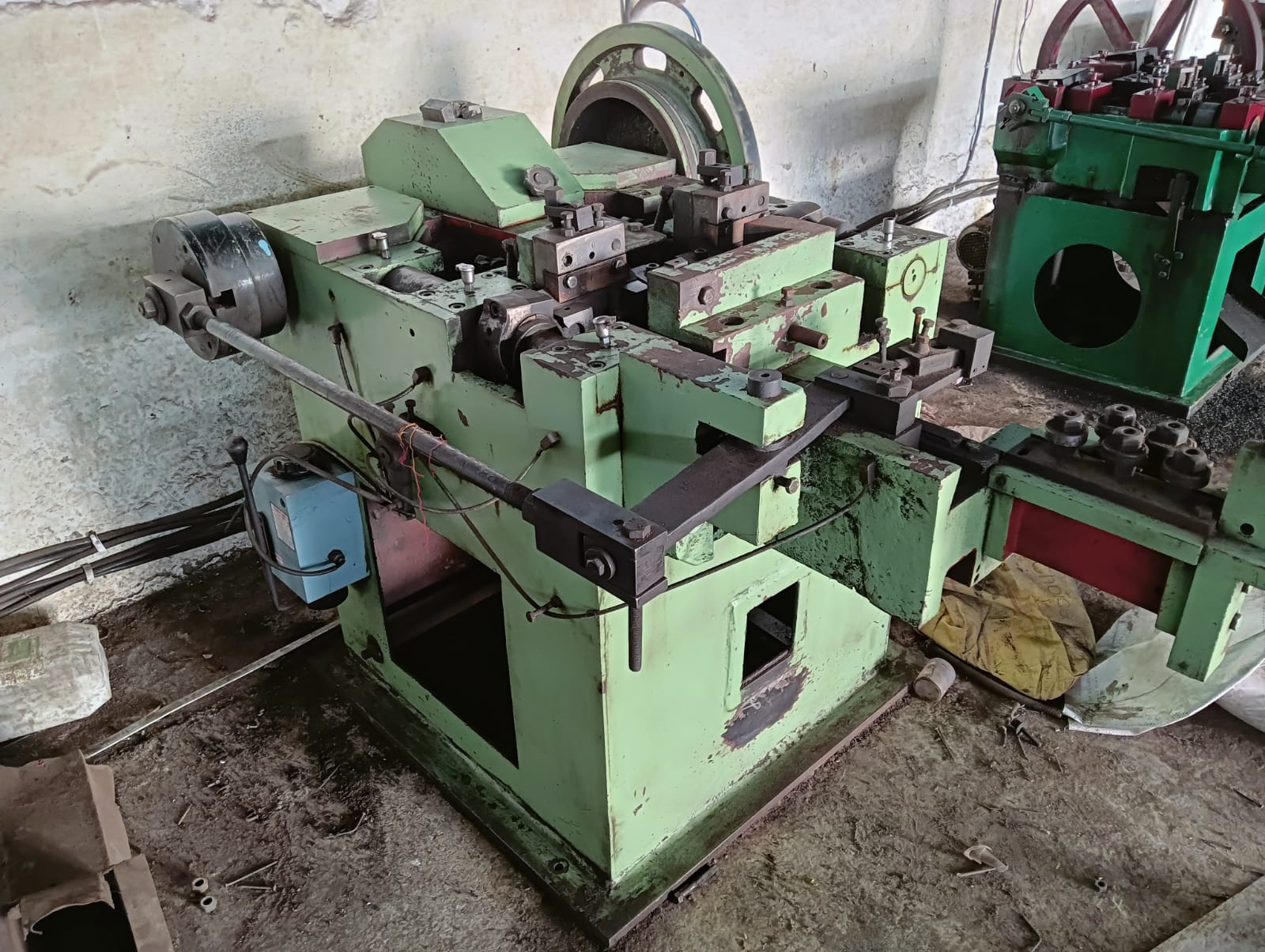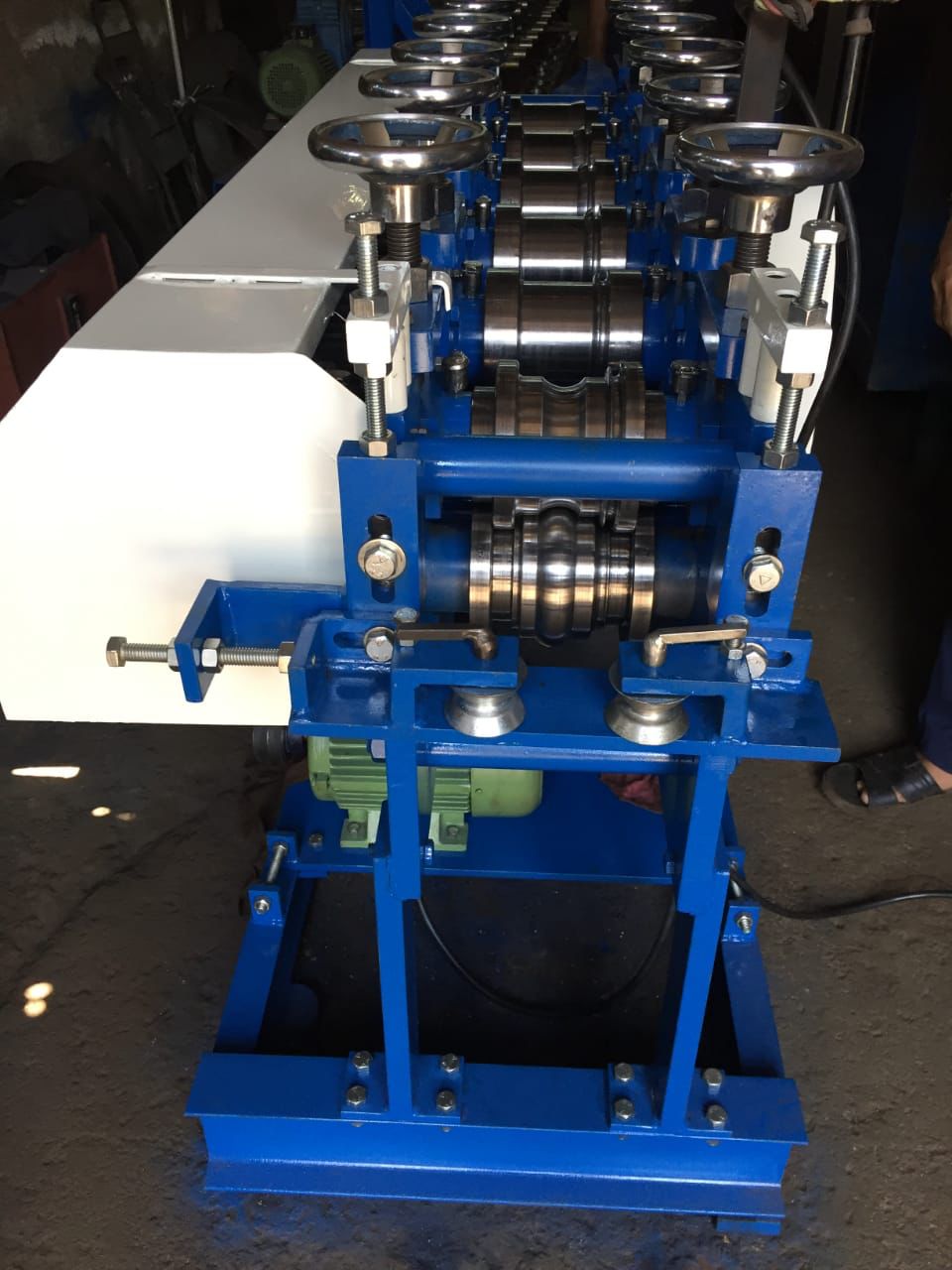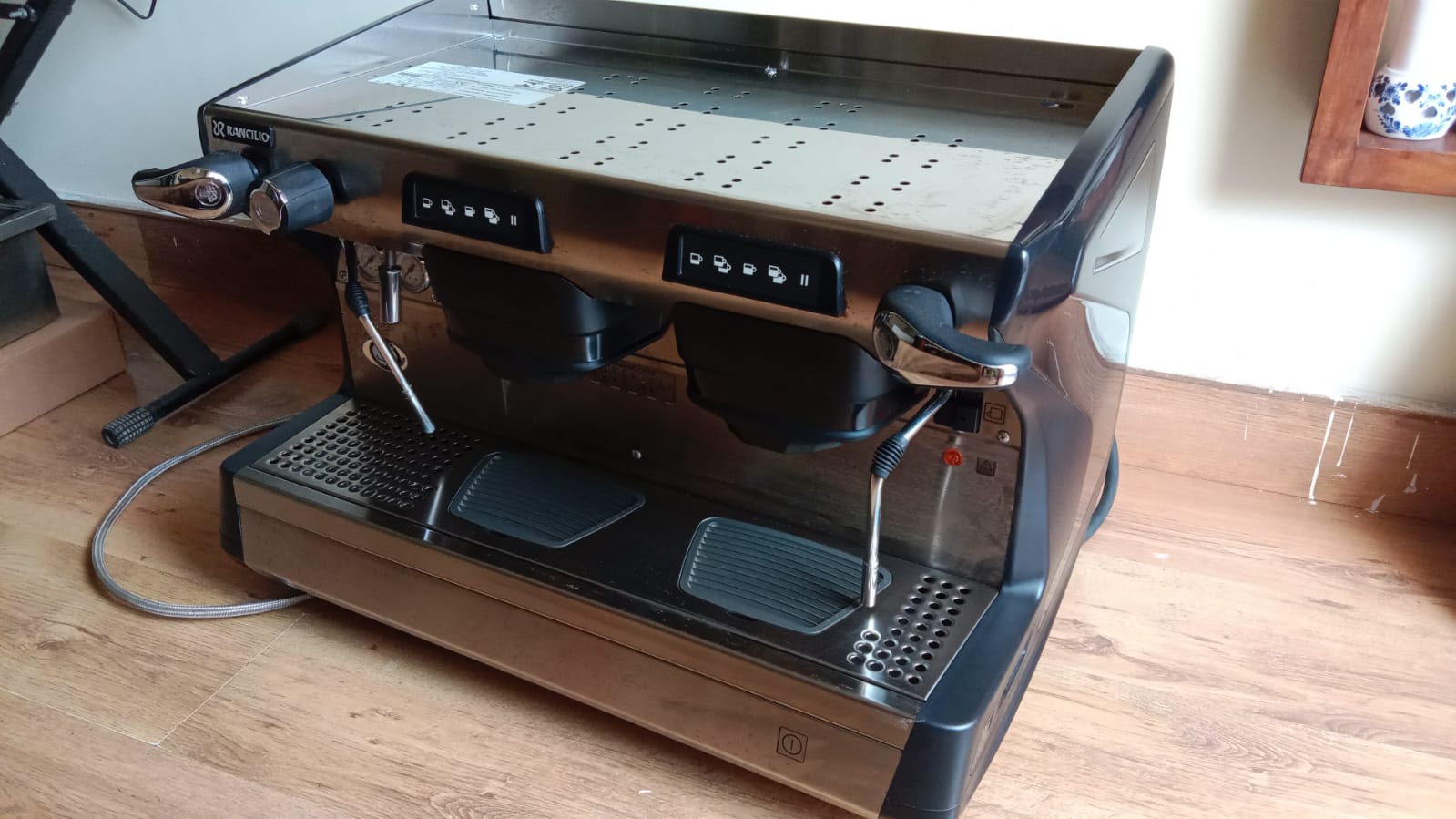Jyoti DX 200 CNC Turning Center
₹7.00 Lakh
This is a Jyoti DX 200 CNC Turning Center
Product Specification
| Machine Type | Vertical Turning Centre |
| Swing Over Bed | 500 mm |
| Std. Turning Diameter | 250 mm |
| Maximum Turning Length | 300 mm |
| X-Axis Travel (Cross) | 175 mm |
| Z-Axis Travel (Longitudinal) | 300 mm |
| Rapid Feed (X & Z axis) | 24 m/min |
| Spindle Motor Power – Fanuc | 7.5/5.5 kW |
| Spindle Motor Power – Siemens | 9.8/7.5 kW |
| Spindle Speed Range | 4000 rpm |
| Spindle Bore | 55 mm |
| Max. Bar Capacity | 44mm |
| Number of Station | 8 |
| Max. Boring Bar Dia. | 40 mm |
| Tool Size (Cross Sectional) | 25 x 25 mm |
| Length | 2150 mm |
| Width | 1440 mm |
| Height | 1770 mm |
| Brand | Jyoti |
A CNC turning center, also known as a CNC lathe or CNC turning machine, is a computer-controlled machine tool used in machining and manufacturing processes. It is primarily designed for the precision machining of cylindrical workpieces, such as shafts, rods, and other rotational parts. CNC turning centers are essential in industries like aerospace, automotive, medical device manufacturing, and more. Here are some key features and functions of a CNC turning center:
- Workpiece Rotation: The core function of a turning center is to rotate a workpiece rapidly. The workpiece is clamped in a chuck, which holds it securely while it spins. This rotation allows the cutting tool to remove material from the workpiece’s surface.
- Computer Numerical Control (CNC): CNC technology is at the heart of these machines. A computer controls the movement of the cutting tools and the rotation of the workpiece with high precision. Operators program the CNC controller with specific toolpaths and parameters for each job.
- Cutting Tools: Turning centers use various cutting tools, such as inserts or solid carbide tools, to remove material from the workpiece. These tools are held in a tool turret or toolholder and can be automatically changed to perform different operations, including facing, turning, grooving, threading, and drilling.
- Axis Movement: CNC turning centers have several axes that can move independently. The primary axes include:
- X-Axis: Horizontal movement of the tool along the workpiece.
- Z-Axis: Longitudinal movement of the tool along the workpiece.
- C-Axis: Rotational movement of the workpiece (if equipped with live tooling).
- Y-Axis (optional): Vertical movement of the tool (used in multi-axis machines).
- Live Tooling (Optional): Some CNC turning centers are equipped with live tooling capabilities, which means they can perform milling and drilling operations in addition to turning. This feature is common in multitasking turning centers.
- Automatic Tool Changer: For machines with multiple tools, an automatic tool changer allows for the seamless switching of tools during the machining process, reducing downtime.
- Coolant and Chip Management: Turning centers often have coolant systems to lubricate and cool the cutting tools. They also include chip conveyors or chip management systems to remove chips generated during machining.
- Workpiece Handling: Some turning centers have robotic or automated systems for loading and unloading workpieces, increasing efficiency and reducing manual labor.
- Precision and Repeatability: CNC turning centers offer high precision and repeatability, making them suitable for machining parts with tight tolerances.
-
Monitoring and Control: Operators monitor the machining process through the CNC control panel, which displays information about tool position, spindle speed, feed rates, and other critical parameters.
CNC turning centers play a crucial role in modern manufacturing, allowing for the efficient and accurate production of a wide range of cylindrical components. They can significantly increase productivity and reduce human error compared to manual machining processes.
It is in a good working condition.
No pending loan against the machine
It has been Recently serviced.
This is a Jyoti DX 200 CNC Turning Center
Product Specification
| Machine Type | Vertical Turning Centre |
| Swing Over Bed | 500 mm |
| Std. Turning Diameter | 250 mm |
| Maximum Turning Length | 300 mm |
| X-Axis Travel (Cross) | 175 mm |
| Z-Axis Travel (Longitudinal) | 300 mm |
| Rapid Feed (X & Z axis) | 24 m/min |
| Spindle Motor Power – Fanuc | 7.5/5.5 kW |
| Spindle Motor Power – Siemens | 9.8/7.5 kW |
| Spindle Speed Range | 4000 rpm |
| Spindle Bore | 55 mm |
| Max. Bar Capacity | 44mm |
| Number of Station | 8 |
| Max. Boring Bar Dia. | 40 mm |
| Tool Size (Cross Sectional) | 25 x 25 mm |
| Length | 2150 mm |
| Width | 1440 mm |
| Height | 1770 mm |
| Brand | Jyoti |
A CNC turning center, also known as a CNC lathe or CNC turning machine, is a computer-controlled machine tool used in machining and manufacturing processes. It is primarily designed for the precision machining of cylindrical workpieces, such as shafts, rods, and other rotational parts. CNC turning centers are essential in industries like aerospace, automotive, medical device manufacturing, and more. Here are some key features and functions of a CNC turning center:
- Workpiece Rotation: The core function of a turning center is to rotate a workpiece rapidly. The workpiece is clamped in a chuck, which holds it securely while it spins. This rotation allows the cutting tool to remove material from the workpiece’s surface.
- Computer Numerical Control (CNC): CNC technology is at the heart of these machines. A computer controls the movement of the cutting tools and the rotation of the workpiece with high precision. Operators program the CNC controller with specific toolpaths and parameters for each job.
- Cutting Tools: Turning centers use various cutting tools, such as inserts or solid carbide tools, to remove material from the workpiece. These tools are held in a tool turret or toolholder and can be automatically changed to perform different operations, including facing, turning, grooving, threading, and drilling.
- Axis Movement: CNC turning centers have several axes that can move independently. The primary axes include:
- X-Axis: Horizontal movement of the tool along the workpiece.
- Z-Axis: Longitudinal movement of the tool along the workpiece.
- C-Axis: Rotational movement of the workpiece (if equipped with live tooling).
- Y-Axis (optional): Vertical movement of the tool (used in multi-axis machines).
- Live Tooling (Optional): Some CNC turning centers are equipped with live tooling capabilities, which means they can perform milling and drilling operations in addition to turning. This feature is common in multitasking turning centers.
- Automatic Tool Changer: For machines with multiple tools, an automatic tool changer allows for the seamless switching of tools during the machining process, reducing downtime.
- Coolant and Chip Management: Turning centers often have coolant systems to lubricate and cool the cutting tools. They also include chip conveyors or chip management systems to remove chips generated during machining.
- Workpiece Handling: Some turning centers have robotic or automated systems for loading and unloading workpieces, increasing efficiency and reducing manual labor.
- Precision and Repeatability: CNC turning centers offer high precision and repeatability, making them suitable for machining parts with tight tolerances.
-
Monitoring and Control: Operators monitor the machining process through the CNC control panel, which displays information about tool position, spindle speed, feed rates, and other critical parameters.
CNC turning centers play a crucial role in modern manufacturing, allowing for the efficient and accurate production of a wide range of cylindrical components. They can significantly increase productivity and reduce human error compared to manual machining processes.
It is in a good working condition.
No pending loan against the machine
It has been Recently serviced.


